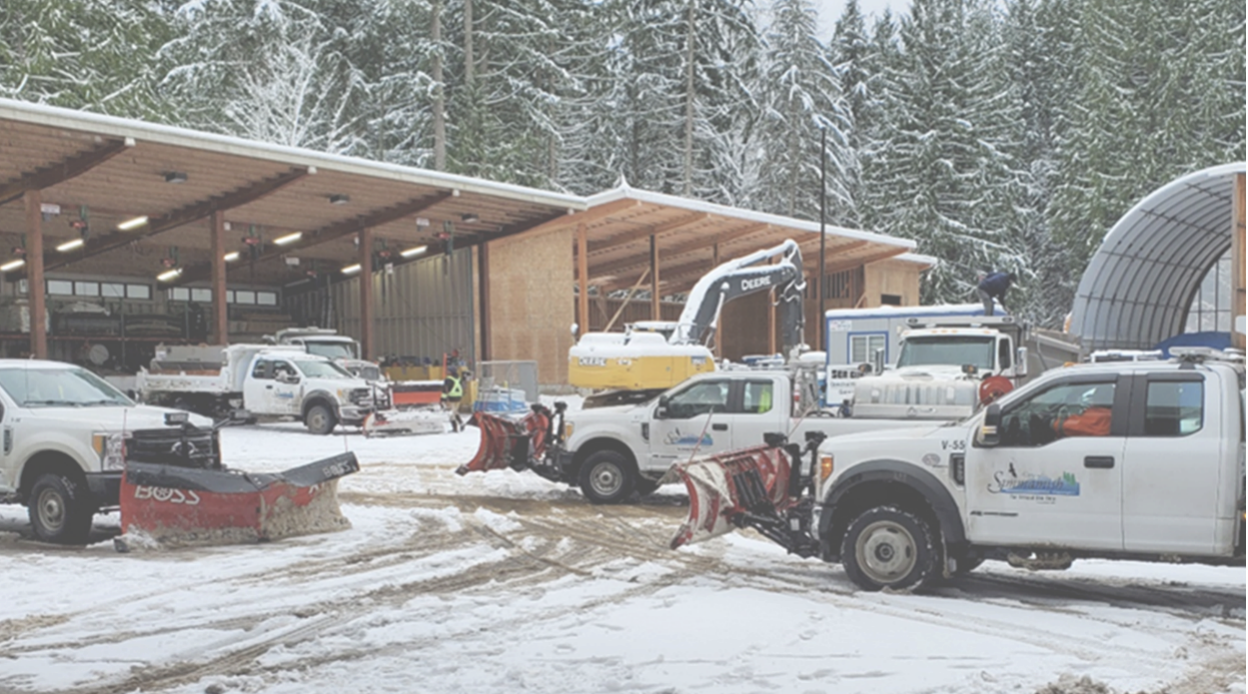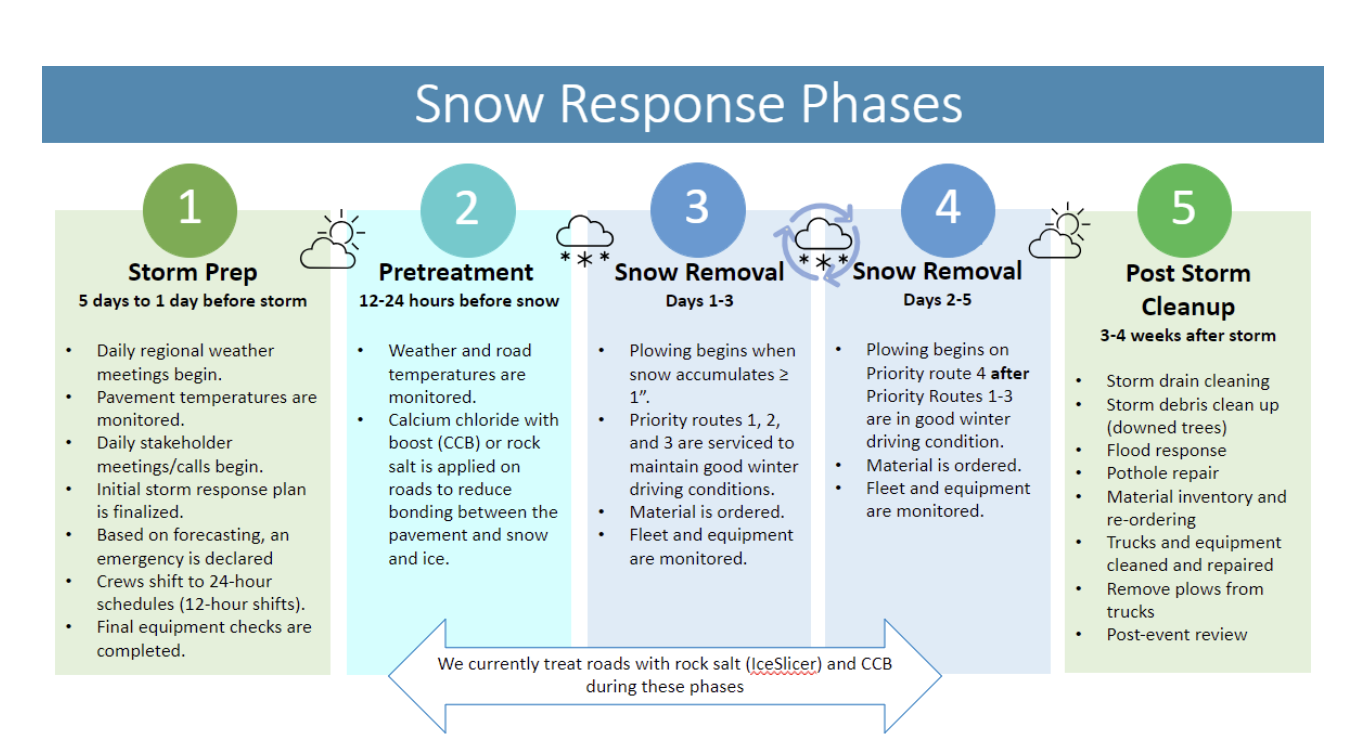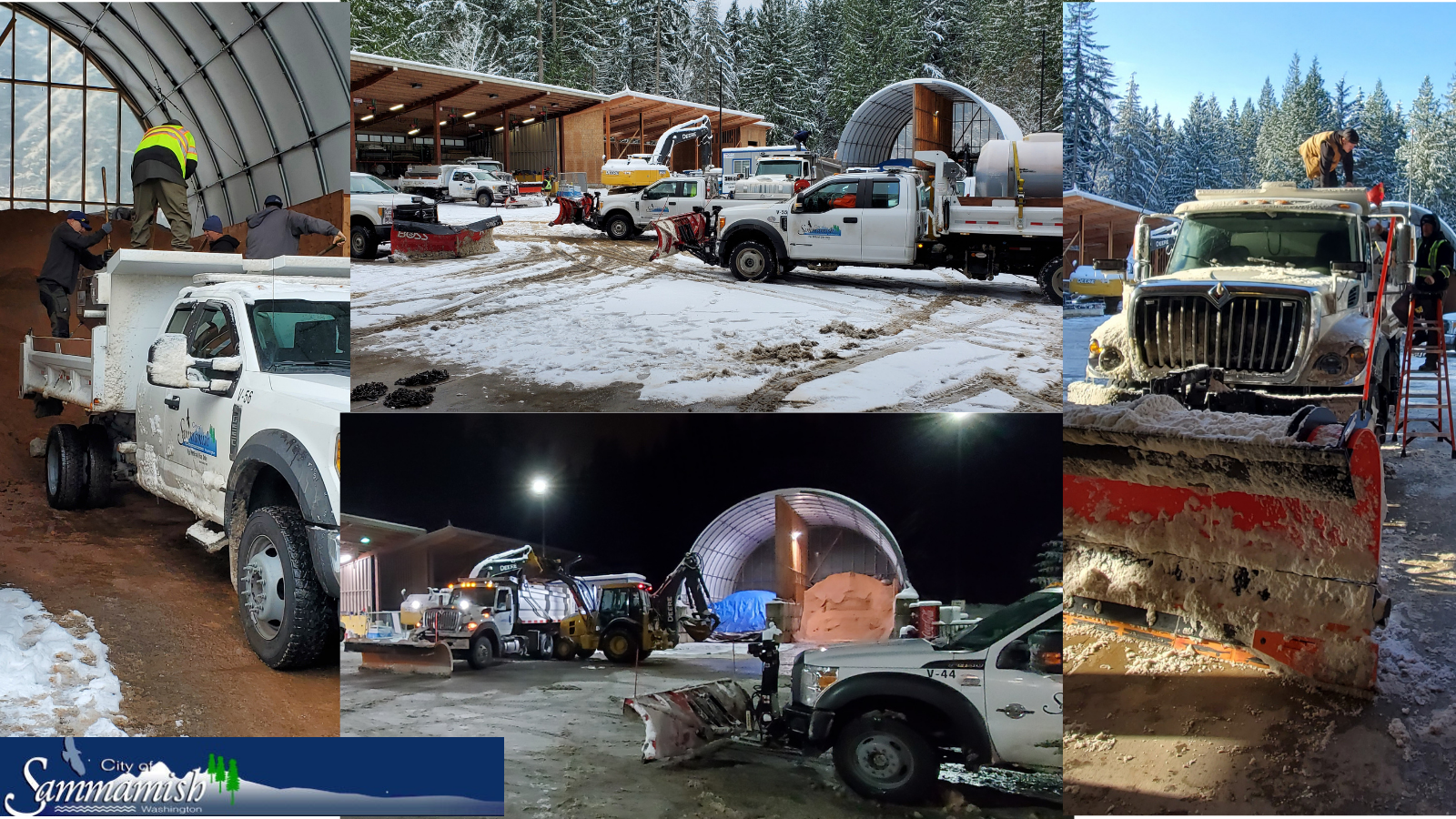
Snow and Ice Response
Public Works
Administrative Assistant
The goal of the City’s Snow & Ice Program is to provide the safest and most accessible transportation system possible during inclement weather and winter storm events, while considering both environmental and cost impacts. Although almost every branch of City government plays a role in winter storm response, the Public Works Department primarily manages the City’s winter storm response efforts, since winter storms typically affect infrastructure such as roads, signs, traffic signals, and storm drains, and stormwater flow control facilities (stormwater ponds).
With over 415 lane miles of public roads in Sammamish—nearly the same distance as from Sammamish to Grants Pass, Oregon—a majority of the City’s resources before, during, and after a snow event are dedicated to maintaining safe winter driving conditions on roads that serve the greatest number of people and support transit, fire, police, and medical responders.
The City has four priority routes. Our snow fighters service the Lifeline Route, also known as Snow Priority Route 1, first. The other three priority routes are then serviced in sequence. Depending on the storm type, duration, and available resources, local roads may not be serviced, especially during snow or ice storms forecasted to last several days. Using fewer resources for isolated storms helps reduce environmental impact, optimizes resources, and preserves materials and equipment for larger storm events.
Snow response is a collaborative effort between the City and the community. By working together, we can make winter conditions safer for everyone. Here’s what to expect during a winter event:
- Although the City plans for snow and ice throughout the year, active snow operations typically run November through March.
- During the winter season, weather conditions are monitored 24/7.
- Priority is given to lifeline-first responder-routes, transit routes, arterials, and major hills.
- Materials are strategically placed throughout the City for efficient response.
- In an average storm event, when road and air temperatures are expected to warm within 3–5 days, only Priority Routes 1 - 4 will be plowed and treated, with no service provided for neighborhood roads including cul-de-sacs.
- For longer events, the City may implement additional strategies, such as plowing and treating main neighborhoods through streets.
- Winter weather updates are available on the City’s website and social media channels.
The City does not accept individual plow requests, so it’s important to review the Snow & Ice Priority Routes and plan ahead—ensuring that your household has a preparedness plan in place to cover essential needs for 3–5 days. Key resources, including the Snow & Ice Management Plan and Snow & Ice Map, can be found in the right sidebar and below.

City Snow & Ice Program Preparation
While the community may only see snow in Sammamish a few days or weeks a year, the City prepares for winter storms year-round. Preparation consists of material/equipment inventory, staff training, budget preparation, and of course, preparing for each storm event. While each storm is unique, most storms have several distinct phases: storm preparation, pretreatment, snow/ice treatment/removal, and post-storm cleanup. The phases are shown in the above image.
Storm Preparation
Each storm event is unique. When a storm is initially forecast, the City reviews the following criteria to develop a response plan for that specific storm:
Precipitation forecast:
- Expected amount of snow and/or ice per day and per storm event
- if the forecast calls for rain right before snow (this affects how/if we pretreat the roads)
- length of the storm
Forecasted temperatures:
- Forecasted air temperatures; current and anticipated road temperatures
Available resources
- at the City level, as well as locally, regionally, and nationally
Coordination with partners:
- Collaboration with neighboring jurisdictions, school districts, utility providers, and transit
Storm severity:
- Whether the storm will be localized (affect some cities), regional (affecting Western Washington), or more widespread (affecting Washington and other states).
Storm Response
Routes – Prioritizing Roads
Sammamish has over 210 centerline miles and 415 lane miles of public roads. The City developed four Priority Routes for the Snow & Ice Program that prioritize serving the greatest number of people as well as accommodating transit, police, fire, and medical responders needs. The City’s snow fighters service each route in sequential order, from 1 through 4. The Priority Routes compose 65.67 centerline miles of public roads.
Beginning in November 2024, local roads including neighborhood and cul-de-sacs will not be serviced for storm events with typical conditions that are forecast to improve in 3-5 days.
Equipment, Materials, and Resources
The City has 14 trucks that can accommodate snow and ice management equipment. Prior to a storm event, plows are added to the front of our trucks, and either a sander or deicer skid is placed in the bed of the truck. In addition to plow trucks, snow and ice response requires other equipment such as excavators and backhoes for loading material into trucks.
In Sammamish, we utilize several different types of materials before, during, and after snow and ice events. The amount and type of each material depends on the severity of the storm as well as other factors listed in the Storm Preparation section. These materials include:
- Calcium Chloride with Boost (CCB)
- Rock Salt
- Sand
Sand has a limited application value, and the City strives to minimize the amount of sand that enters the storm drains when the snow melts. The City is required by its stormwater permit with the Department of Ecology to remove sand from storm drains shortly after a storm.
Post-Storm Cleanup
After each snow and ice event, the City begins post-storm cleanup, which can take days or even weeks to complete. Different types of post-storm work is described below:
Trucks and Equipment Inspection & Service
The Public Works Maintenance crew, working together with our in-house mechanic, will start the vehicle and equipment clean-up process, which consists of two crucial phases:
- Application of salt neutralizer to all plow trucks and equipment used during the storm to reduce long-term damage from road salt & deicer.
- Inspection and testing of equipment and vehicles, particularly evaluating broken, worn, and non-function parts that need service or replacement.
Inspection and testing of equipment and vehicles, with a focus on identifying broken, worn, or non-functional parts that require servicing or replacement
City Streets and Right-of-Way Evaluation & Cleanup
- Crews will respond to issues arising from the storm such as roadside debris, flooding issues, downed trees, and potholes.
- Check the functionality of the stormwater system including leaves, snow, and debris covering storm drains throughout the city.
- Investigate work requests stemming from the storm sent in via the My Sammamish app and by phone.
Resource Inventory
- Post-storm event de-brief.
- The total amount of materials used (road salt & deicer) for the storm are quantified.
- Orders are placed to restock materials as needed.
